| Black-faced Grassquit
Tiaris bicolor Gorrión Negro, |
 |
|
Male - Photo: A. Sánchez Muñoz
|
| Black-faced Grassquit
Tiaris bicolor Gorrión Negro, |
 |
|
Male - Photo: A. Sánchez Muñoz
|
|
IDENTIFICATION: A small finch with a dark, olive-green back, and black head and undersides. The female is dull olive but without the faint yellow head markings of the Yellow-faced Grassquit. Length: 11-12 cm.; weight: 9-10 g. VOICE: Males sing all day in breeding season with a weak song: a two or three note, buzzy trill, somewhat like a Bananaquit's, but lower pitched and less variable. Audio 3 (M. Oberle). The call is described as a low-pitched "tseet." HABITAT: Open, brushy fields and roadsides, coffee plantations, gardens, open woodlands and forest clearings. HABITS: Travels in pairs or flocks feeding close to the ground or exploring tree limbs. Feeds mostly on small seeds, which it eats whole, or after removing the hull. However, it will also eat caterpillars, roaches, leafhoppers, and spiders. Readily attracted to bird-seed feeders, and can become relatively tame. Breeds throughout the year, but more commonly as the rainy season begins. The male displays by calling, and fanning his tail and short wings simultaneously. He performs a courtship flight at slow speed, with fluttering wings. The nest is a low, globular grass structure, with an entrance on the side, and can be built in only three days. The female incubates the 2-5 eggs (white with brown and black spots) for about two weeks. The male helps feed the young, which fledge in about 11-14 days. STATUS AND CONSERVATION: A common, adaptable species. RANGE: Occurs in northern Colombia and Venezuela and throughout the Caribbean islands, except Cuba and the Cayman Islands. TAXONOMY: PASSERIFORMES; EMBERIZIDAE. The race found in Puerto Rico (Tiaris bicolor omissa) is also found in Tobago and northern South America. |
|
 |
|
|
Male - Photo: M. Oberle
|
 |
|
Female - Photo: M. Oberle
|
 |
|
|
Immature male - Photo: M. Oberle
|
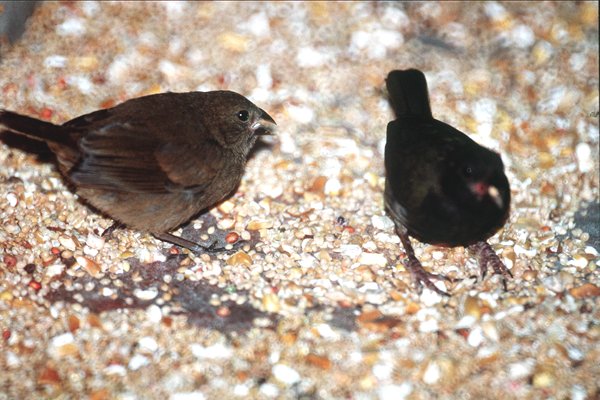 |
|
|
Immature begging - Photo: M. Oberle
|
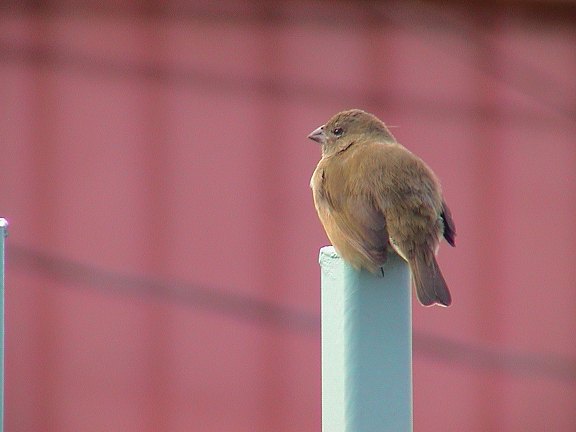 |
|
Photo: R. Rodríguez Mojica
|
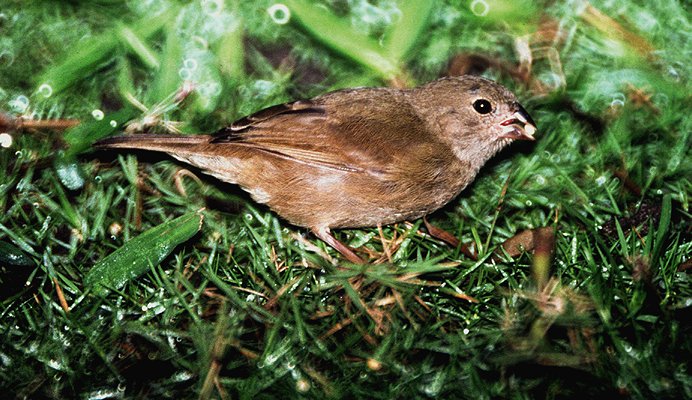 |
|
|
Female - Photo: M. Oberle
|
 |
|
|
Bahamas female (Tiaris
bicolor bicolor)-
Photo: B. Hallett
|
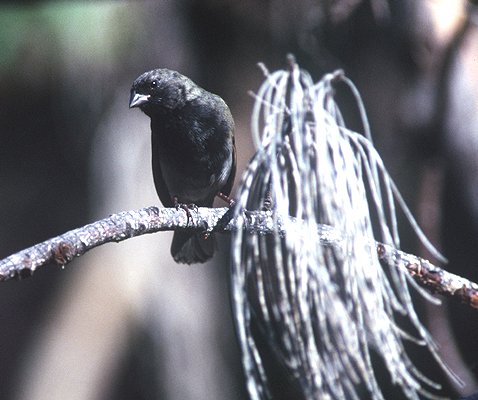 |
|
|
Bahamas male (Tiaris
bicolor bicolor)
- Photo: B. Hallett
|
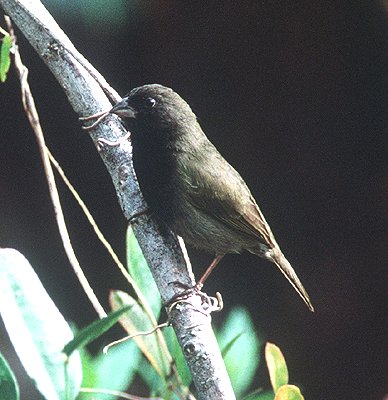 |
|
|
Bahamas male (Tiaris
bicolor bicolor)
-
Photo: B. Hallett |
|
References Bent, A.C. 1968. Life histories of North American cardinals, grosbeaks, buntings, towhees, finches, sparrows an allies, part 1. Smithsonian Instit. U.S. National Museum Bull. 237. (Reprinted by Dover Press, NY, 1968). Raffaele, H.A. 1989. A guide to the birds of Puerto Rico and the Virgin Islands. Princeton. Raffaele, H.A. 1989. Una guía a las aves de Puerto Rico y las Islas Vírgenes. Publishing Resources, Inc., Santurce, PR. Raffaele, H.A., J.W. Wiley, O.H. Garrido, A.R. Keith, and J.I. Raffaele. 1998. Guide to the birds of the West Indies. Princeton. Recher, H.F. and J. T. Recher. 1966. A contribution to the knowledge of the avifauna of the Sierra de Luquillo, Puerto Rico. Carib. J. Sci. 6:151-161. Black-faced Grassquit, Spanish text Next related species in taxonomic order Previous related species in taxonomic order |
|